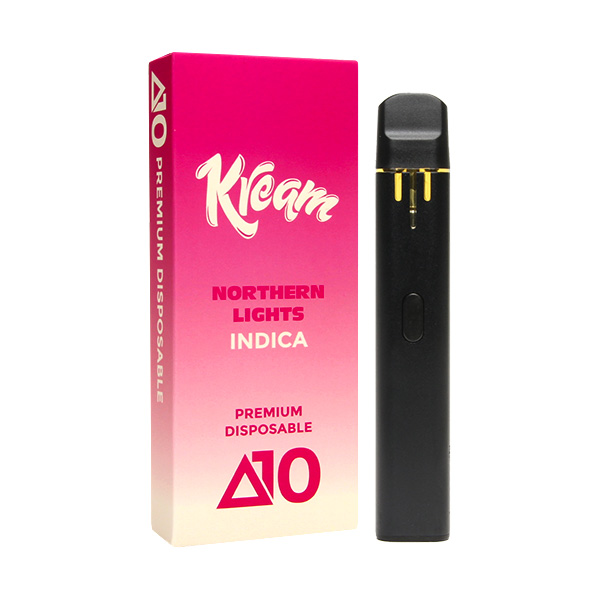Kream Disposable Vape Devices: Redefining On-the-Go Vaping with Style and Flavor
Kream Disposable Vape Devices: Redefining On-the-Go Vaping with Style and Flavor
Blog Article
Discovering the Environmental Impact of Non Reusable Vape Pens: What You Required to Know
In the realm of disposable vape pens, a more detailed assessment of their environmental impact discloses an intricate internet of interconnected elements that warrant our focus. From the manufacturing processes and materials made use of to their eventual disposal and influence on air top quality, the effects of these relatively convenient tools extend much beyond their immediate usage. Comprehending the full range of their environmental impact is essential for making educated decisions concerning our usage habits and the possible options readily available.
Production Processes and Products
Disposable vape pens are usually manufactured making use of a range of products and procedures that can have considerable environmental effects. The main parts of disposable vape pens consist of a battery, burner, e-liquid storage tank, and a mouthpiece. The battery is usually made from lithium, a non-renewable source that requires substantial energy to extract and process. The e-liquid tank is commonly made of plastic, including in the ecological burden as a result of its non-biodegradable nature. The burner, typically made of steel alloys, additionally adds to the environmental impact through the extraction and handling of raw products.
Moreover, the manufacturing processes involved in producing disposable vape pens can further exacerbate their environmental impact. Making use of plastics, metals, and chemicals in the production procedure causes greenhouse gas exhausts, power usage, and waste generation. Furthermore, the transportation of resources and finished products contributes to the total carbon impact of non reusable vape pens. Thinking about these aspects, it is crucial for makers and customers to be mindful of the ecological repercussions connected with the production and use non reusable vape pens.
Power Usage in Production
Throughout the production process of disposable vape pens, the energy usage entailed plays a significant role in identifying their overall ecological influence. The manufacturing of disposable vape pens requires power for numerous phases, including extraction and handling of raw materials, making parts like batteries and home heating aspects, assembly, transportation, and packaging.
To address the environmental implications of energy consumption in production, producers can adopt much more sustainable practices. This can include utilizing renewable resource resources for producing procedures, optimizing manufacturing procedures to lower power waste, and carrying out energy-efficient innovations. By prioritizing energy efficiency and sustainability in manufacturing, the ecological effect of disposable vape pens can be reduced, contributing to a greener and even more liable vaping market.
Disposal and Waste Administration

Non reusable vape pens consist of elements such as batteries, electronic circuits, and plastic casings that can be hazardous otherwise taken care of appropriately (kream disposable). The lithium-ion batteries in vape pens, as an example, position a considerable danger if they wind up in land fills, as they can leak hazardous compounds into the dirt and supply of water
To address this concern, consumers should be enlightened on the proper disposal approaches for vape my explanation pens. Recycling programs especially created for electronic waste must be promoted to urge users to reuse their disposable vape pens sensibly. Furthermore, suppliers ought to take into consideration executing take-back programs to promote the risk-free disposal and recycling of these devices. By enhancing disposal techniques and waste administration approaches, the environmental effect of non reusable vape pens can be substantially reduced.
Influence On Air Top Quality
The presence of disposable vape pens adds to the destruction of air high quality in metropolitan environments where their use is common. When people utilize disposable vape pens, they launch unsafe materials into the air.
Moreover, the disposal of vape pen batteries, which typically include heavy steels like cobalt, nickel, and lithium, can bring about air pollution if not taken care of appropriately. Improper disposal approaches, such as incineration or landfilling, can launch these toxic steels into the air, adding to air contamination and potentially creating damage to human health.
To mitigate the effect of non reusable vape pens on air high quality, advertising awareness regarding proper disposal techniques, urging reusing programs for vape pens and batteries, and enlightening users regarding the environmental repercussions of these gadgets are crucial action in minimizing their ecological impact.
Alternatives and Sustainable Selections
Because of the ecological influence presented by non reusable vape pens, exploring choices and sustainable selections is necessary for lowering ecological injury. One lasting option is to switch over to refillable vape pens more that allow individuals to reenergize the tool with e-liquid, significantly minimizing the quantity of waste created. These refillable pens often have longer life expectancies, leading to less gadgets winding up in landfills. In addition, picking vape pens made from recyclable products can better minimize the environmental impact. Suppliers are increasingly offering environmentally friendly choices, such as pens built from naturally degradable plastics or recycled steels.
In addition, some business have actually started implementing take-back programs for utilized vape pens, where they accumulate and recycle the tools appropriately. Encouraging liable disposal methods among customers can additionally contribute to alleviating the environmental impact associated with vape pens.
Verdict
Finally, the ecological impact of non reusable vape pens is significant, with unfavorable results on air quality, energy intake in production, and waste administration. It is crucial for consumers to take into consideration the sustainability best site of their choices and go with choices that have a reduced environmental footprint. By making educated choices and supporting sustainable methods, people can add to decreasing the ecological injury triggered by disposable vape pens.

Reliable disposal and effective waste administration are critical aspects to think about when reviewing the environmental effect of non reusable vape pens. By boosting disposal practices and waste administration approaches, the environmental impact of disposable vape pens can be dramatically reduced.
In conclusion, the environmental effect of non reusable vape pens is substantial, with negative effects on air high quality, power intake in manufacturing, and waste monitoring.
Report this page